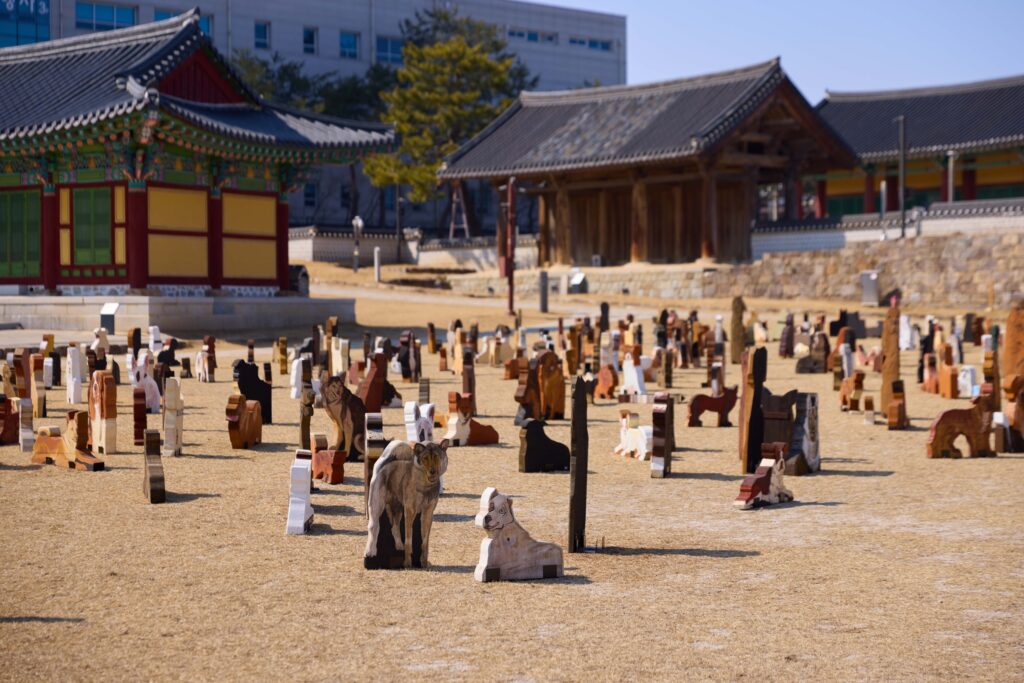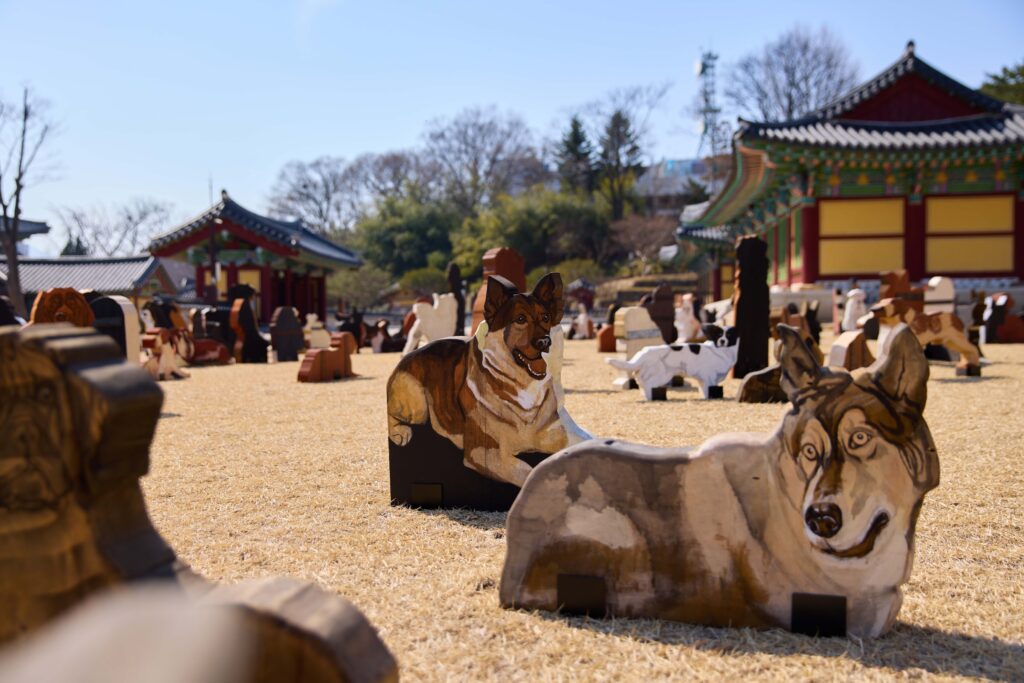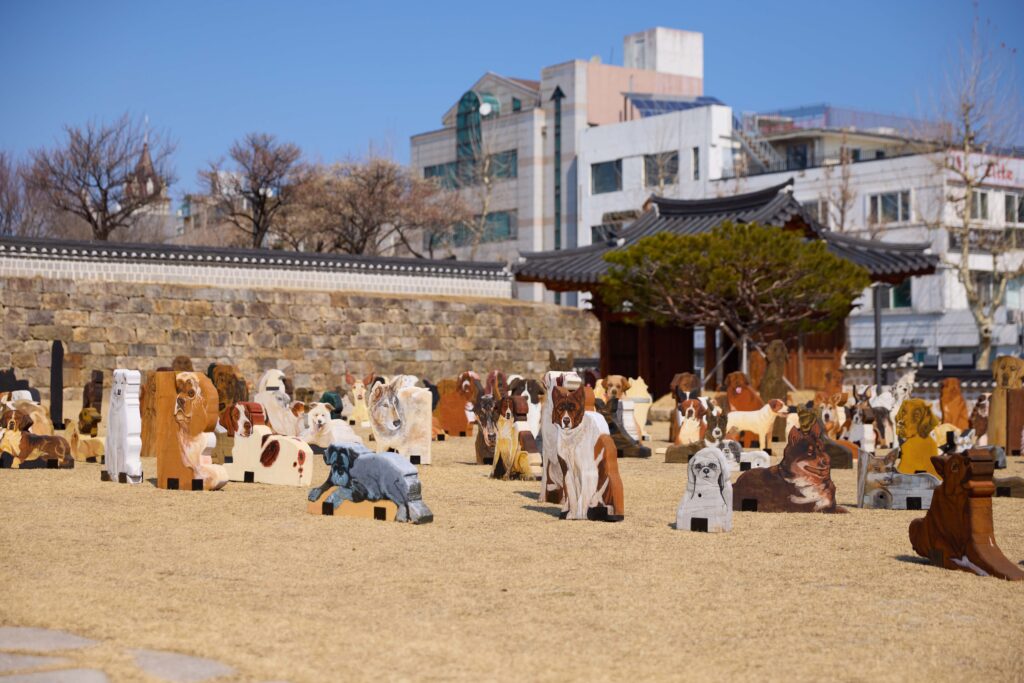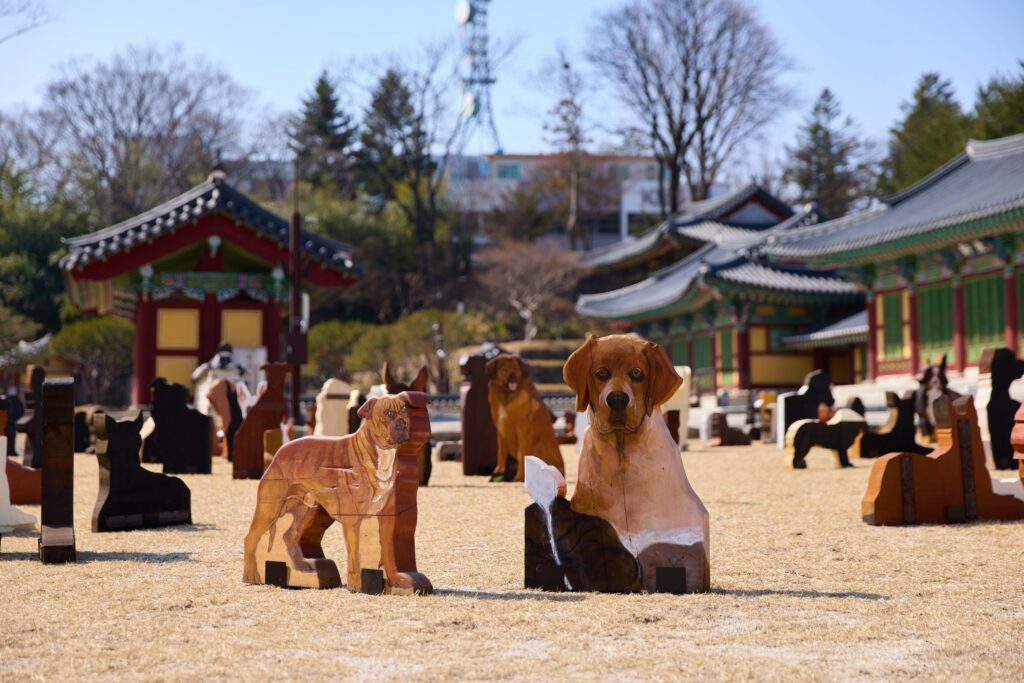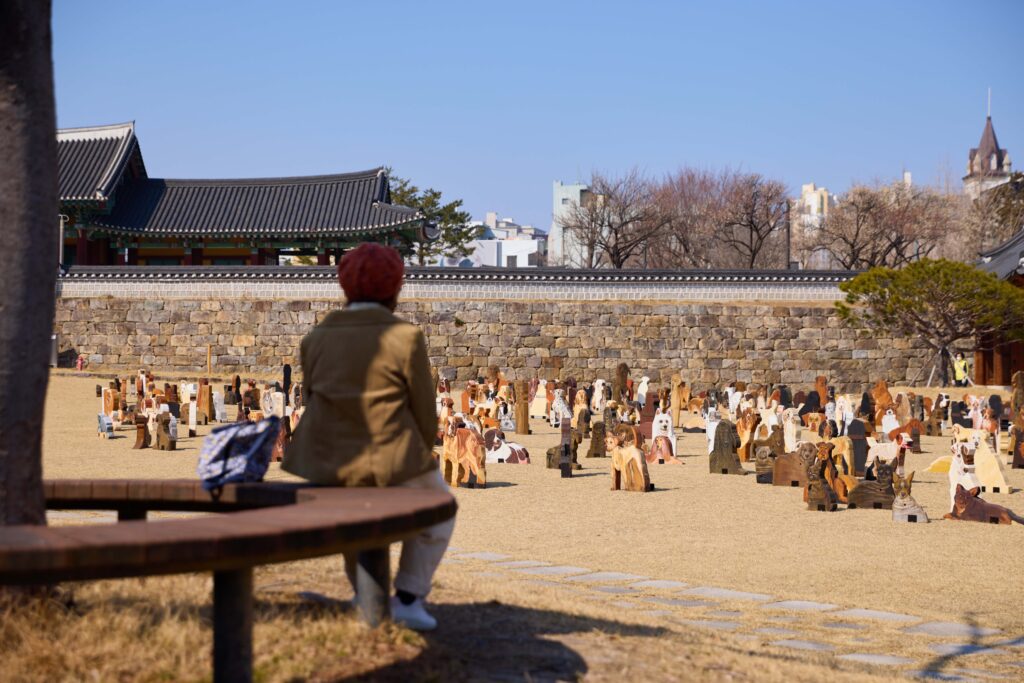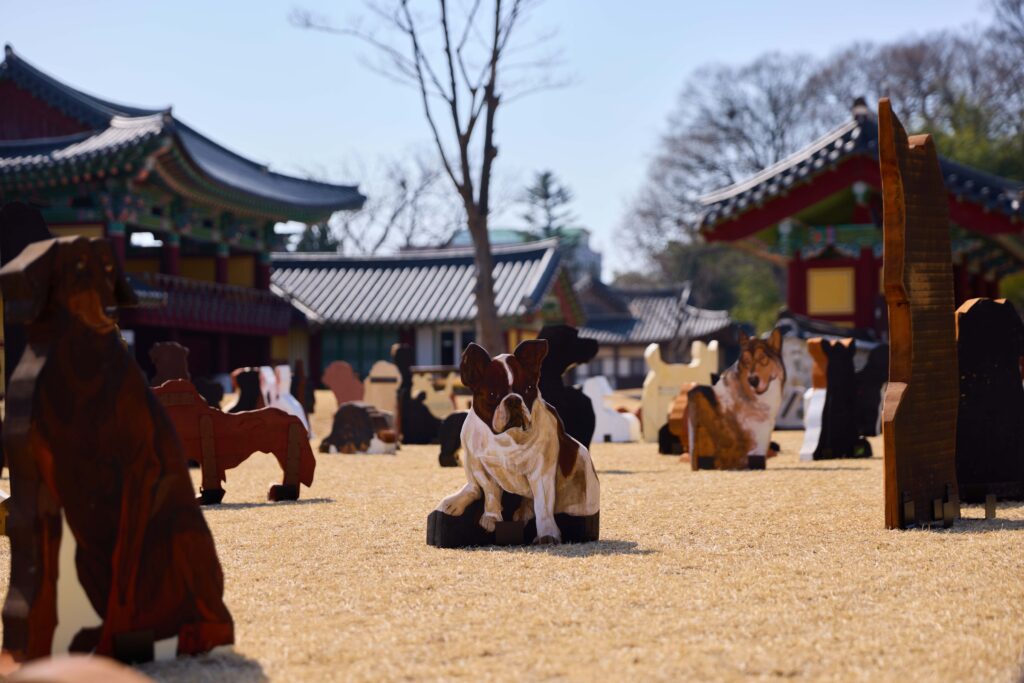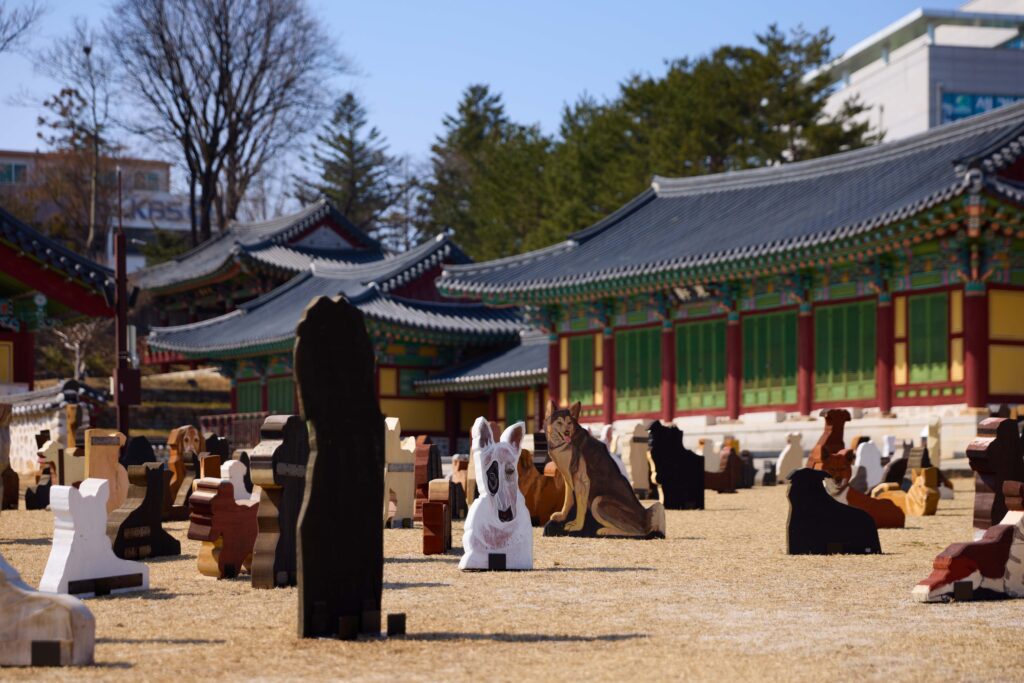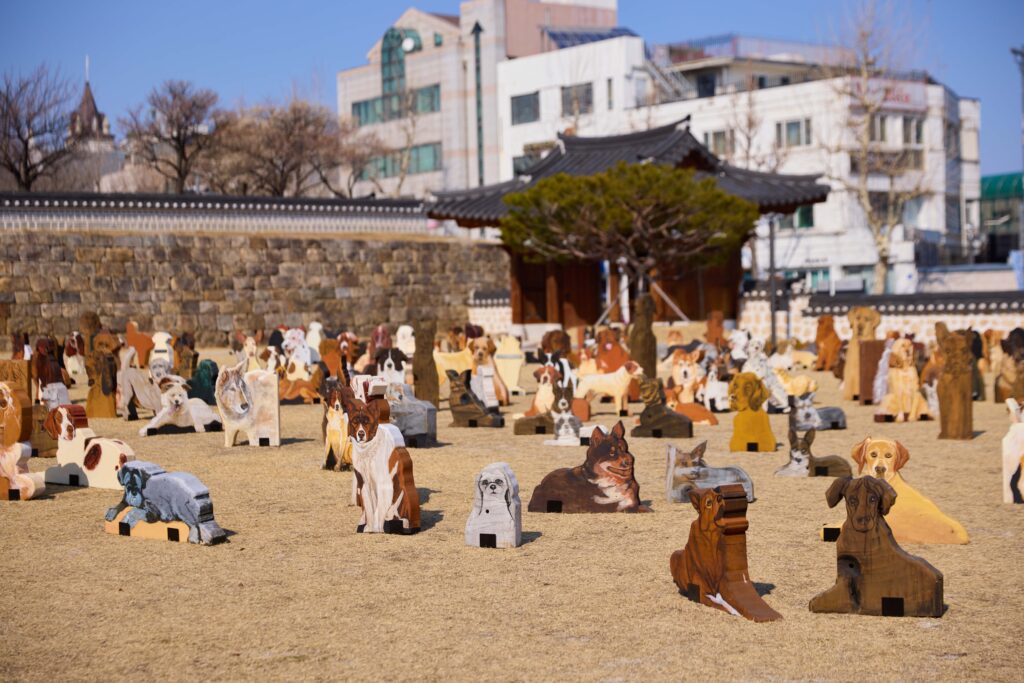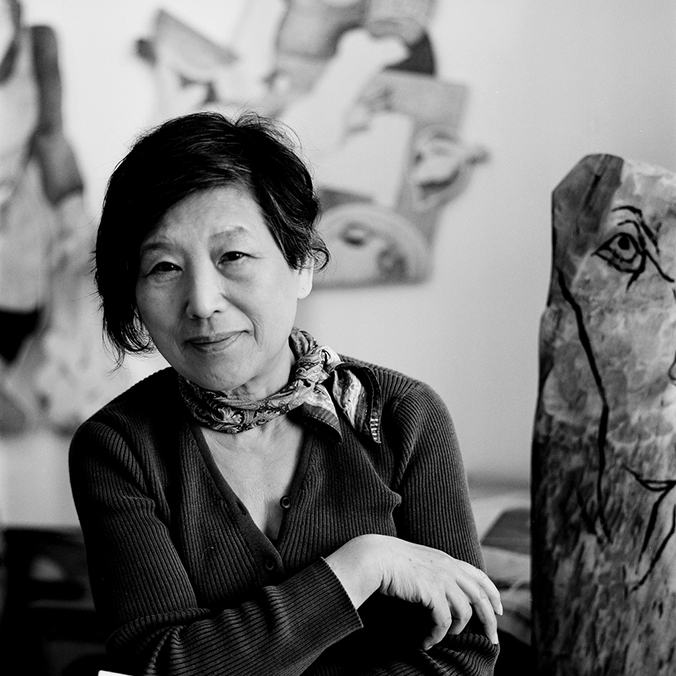EXHIBITION
ARTIST
- 1,025: With or Without Person, 2003-2008, 2025, acrylic on wood, dimension variable, 367 pieces from a total of 1,025.
Born in 1939 in Manchuria under Japanese colonial rule, YUN Suknam made her debut as an artist in her forties. Beginning with her first solo exhibition in 1982, she became a central figure in Korea’s early feminist art movement. Through participation in key group exhibitions, her work asserted women’s voices as a legitimate subject of art. By reinterpreting motherhood and reflecting on the lives of her mother’s generation, YUN created a new narrative of womanhood from within a history shaped by silence and repression. Her lifelong exploration of the psychological and social realities of women’s lives paved the way for feminist art in Korea.
YUN’s work can be understood within the context of Korean feminist art, particularly through the lens of eco-feminism. Her largescale sculptural installation, 1,025: With or Without Person, presented at GIAF25, began with the story of Lee Ae-shin, an elderly woman who has cared for over a thousand abandoned dogs. After reading about her in a newspaper, YUN visited Lee’s shelter, “House of Ae-shin.” While YUN was struck by the heartbreaking reality of abandoned animals, she also felt deep respect for Lee and her dedication. This experience led YUN to recognize abandoned animals as socially marginalized beings, perhaps even as another representation of women. Completed after years of work, this seminal piece embodies compassion and solidarity, expressed through maternal love, care, and a profound love for humanity.
Ecofeminism, which first emerged in the West in the 1970s, is both a philosophical and practical movement. It began with the recognition that the domination of nature and the oppression of women stem from the same patriarchal, humancentered worldview. Since the 1990s, it has grown into one of the major strands within global feminism, characterized not by theoretical abstraction but by lived practice. YUN’s work challenges patriarchal and anthropocentric systems by standing in solidarity with women and other marginalized beings. Her art imagines a world in which all forms of life are treated with equal dignity—and challenges us to reflect on our relationships with life not as acts of control or pity, but as reciprocal and ethical engagements.
To create dog sculptures, YUN worked with the natural texture and grain of wood, cutting and shaping each figure by hand. After sketching each dog’s form, she sanded and primed the surfaces, painted them with layers of acrylic and ink, and carefully brought 1,025 figures to life through a twelve-step process that merges traditional painting methods with those of sculpture and installation. This long, meditative labor became an act of mourning for the lives that had been cast aside, and a quiet wish for coexistence between humans and nature.
Over time, these sculptures have been installed both inside and outside museums, rearranged and recontextualized according to the site. In doing so, the artist broadened our perception of life and reaffirmed the role of art within society.
YUN Suknam (b. 1939) is widely regarded as a pioneer of feminist art in Korea. For over four decades, her works have engaged directly with the lives and reality of women. She was a selftaught artist who began painting in her forties and held her first solo exhibition in 1982. Her early works drew on autobiographical narratives centered on her mother and the experience of motherhood. Over time, her practice expanded to explore themes such as identity, life and care, nature, and feminist histories. In recent years, she has focused on reinterpreting historical female figures through a contemporary lens.
At GIAF25, YUN presented 1,025: With or Without Person, one of her most iconic series in its largest scale to date outdoors. Installed across the front courtyard of the Gangneungdaedohobu Government Office, the work presented themes of abandoned dogs, women’s care labor, and feminism. Hundreds of dogshaped sculptures made from found wood filled the courtyard, powerfully highlighting the oftenoverlooked labor of care and the presence of abandoned dogs.
YUN Suknam’s major solo exhibitions include YUN Suknam: Women of Resistance, Becoming Historic (Hakgojae Gallery, Seoul, 2021), Contemporary Artists (Tokushima Modern Art Museum, Tokushima, 2016), and 2015 SeMA Green : YUN SUKNAM ♥ HEART (Seoul Museum of Art, 2015). Major group exhibitions include The Friendliest (Incheon Art Platform, 2024), The birth of a new woman (Zaha Museum, Seoul, 2023), the 3rd Jeju Biennale Flowing Moon, Embracing Land (Jeju Museum of Contemporary Art, 2022), and Deoksugung Project 2021: Garden of Imagination (Deoksugung Palace, 2021). She has received numerous awards, including the 23rd LEEINSUNG Art Prize (2022), the Moran Medal of the Order of Civil Merit (2019), the 29th Kim Se-Choong Sculpture Award (2015), Prime Minister Prize (1997) and the 8th Lee Jung-seob Award (1996).
Website: http://yunsuknam.com/
